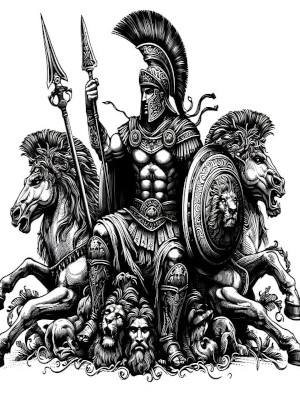Life as we know it nowadays has been strongly impacted by the discoveries and lifestyle of ancient Rome. Until today, there have been many significant cultural traits that we can profit from. But what did life in ancient Rome look like? In this article, you will find out and get a more precise idea about the period of these ancient people and their lifestyle.
Life in ancient Rome
The majority of the population of Rome lived in apartment buildings, or insulae, that had up to seven floors. Rich Romans lived in houses that were better known as “domus,” which had the perks of an artrium and a dining room. One thing that had the different social classes in common were the gatherings in Roman baths where they met up, exchanged information, and just relaxed. These Roman baths were equipped with exercise rooms, pools for swimming, saunas, and massage areas. Another reason for social gathering were the popular gladiator fights, chariot races, or theatre plays.
While Roman citizens had quite an enjoyable life, it was way harder for people who were enslaved. A lot of them did their work in fields, mines, or on ships. On the other hand, there were some citizens, for example, Greek scholars had to teach the children of wealthy inhabitants. A few slaves were at one point able to earn their freedom and escape the never-ending circle of labour and captivity. For the women of Rome, it was not unusual to take work as midwives or priestesses. However, most of the time, their main task was to look after the house and the upbringing of the children.
Moreover, Romans were religious and believed in multiple gods that they worshipped, for example, Jupiter (the god of the sky), Vesta (the goddess of home), or Mars (the god of protection in times of war).
Furthermore, the Romans were also great engineers, and their work can still be admired today. Even though there are a lot of architectural aqueducts left, there are only fragments left, and one is still able to recognise what architectural masterpieces they once were. There is, for instance, the Colosseum, where a lot of political events took place and is a landmark in Italy. Also, there were a lot of streets built by the Romans that are partially still existing today. Thanks to this engineering science, there were around 80,000 kilometres of roads that made it possible for strike forces to capture new areas and salesmen to travel and return to Rome. By the way, this is how the saying “All roads lead to Rome” started. Other than that, the Romans also developed a complex water system that provided the citizens’s baths, toilets, and fountains with fresh water.
The Roman gladiators
As already mentioned, Roman gladiators were a social event and a big attraction for society. Literally translated, the word gladiator means “swordsman.” These professional warriors fought in front of a large group of people in so-called amphitheatres like the Colosseum against each other. The role of the gladiator existed for around 700 years in ancient times. Even though gladiators had a tough standing in society, being one of them was very horrible. Most of them were slaves or prisoners, so they almost never chose these often deadly fights. They fought for their lives, liberty, and just pure survival. The few gladiators who made the decision freely. The reason for that was that they were striving for the glory and attention of the public eye that they receive in case they win, as well as the money that they earn. No matter if they made this decision freely or were forced to, gladiators were extremely well-trained fighters. They were trained in gladiator schools, where they learned all their skills and techniques for the battle. Also, gladiators had managers who provided them with accommodation, food, and everything else they needed in order to win a battle. Especially, big amounts of food were very important to them since they already knew back then that a balanced diet contributed to physical strength and muscle gain. They have also undergone medical check-ups to guarantee their physical well-being. An interesting fact is that gladiators were not always male, but there were also some female fighters. Anyway, they were not allowed to participate anymore after Septimius Severus made a change in the law in 200 AD. Originally, gladiator battles took place at funerals in honour of the deceased. As they gained popularity, they became more common events in the upper social classes with the purpose of entertaining the crowds, and the host had the chance to increase his own reputation. Other purposes of the fights were to distract the people from other social or political issues, to celebrate a successful battle, or when someone of great significance visited. Successful gladiators increased in terms of popularity and fame. They were seen and celebrated as public heroes, and they were equated with honour and courage. A very famous gladiator was Spartacus, who was originally a soldier who got enslaved. The reason for his fame is that he managed to flee and organise a riot together with other gladiators and enslaved people, so he basically led his own army. Before he eventually captured the battle forces of the Roman Empire, he defeated them many times.

Sources:
https://kids.nationalgeographic.com/history/article/ancient-rome
https://graylinerome.com/who-were-roman-gladiators/
